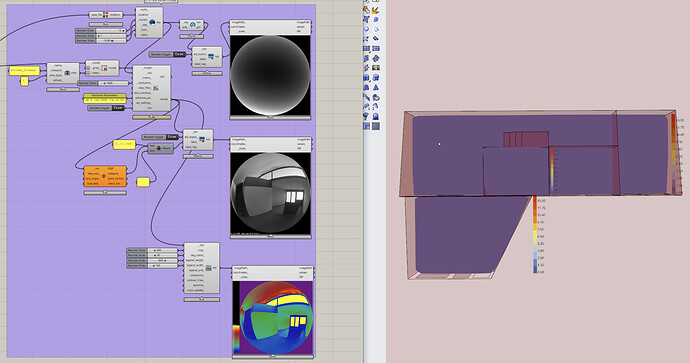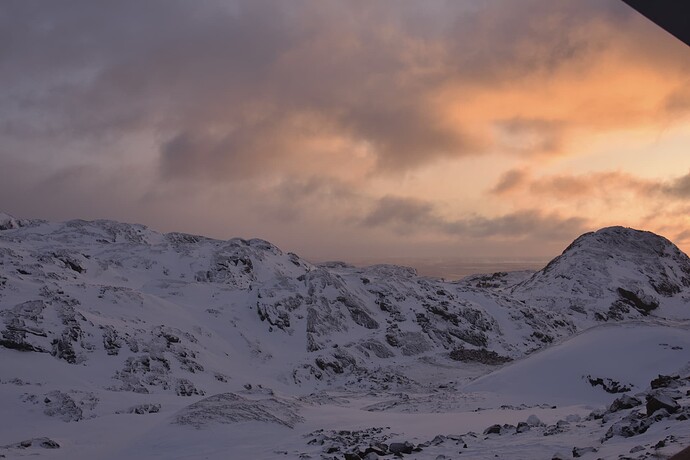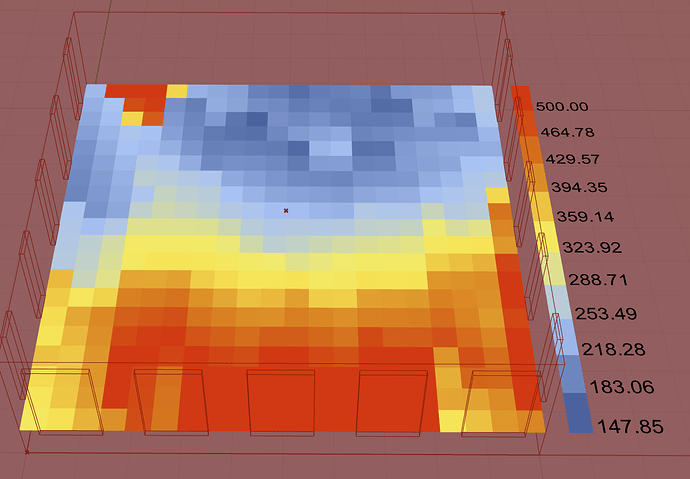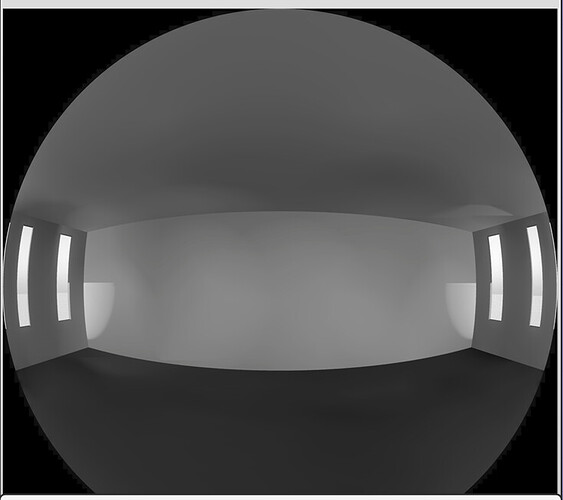@chris I completed the tests you suggested first as they seemed like a good place to start.
I unfortunately can’t provide the gh file as I intended, as my forum account isn’t old enough, so I’ll have to provide screenshots instead.
Picture above is from solar noon on the 3rd of February (hoy 805) which is the brightest hour on the first day of the year in the Resolute dataset that has measured daylight. As seen interior surface illuminance exceeds 100 lux in certain areas, but is mostly below that figure. View is facing south at an elevation of 1.6m and geometry is a 10x10x3m box with 0/0.2/0.4/0.2 apertures by ratio and 0.1m extruded border shades resting on a 100x100m face with 70% reflectance and specularity and roughness 0.1 (my regular stand-in for snow-covered ground, which is my assumption, also if anyone has a good source on optical parameters for snow-covered cityscapes I’d love to read it, I can only find literature pertaining to remote sensing applications), and ambient bounces are set to -ab 8. All other radiance parameters are default.
The ladybug sunpath module gives the first hour of sunlight as solar noon on the 5th of February for the location which excludes 6 hours of measured daylight in the dataset on the 3rd and the 4th of february, as well as two hours on the 5th of February. I haven’t combed through the entire dataset, but I’d guess we’re losing 2 hours of twilight each day of February and November when comparing with the dataset.
Above is a grid-based point-in-time for the same model using a 0.5m grid at the standard 0.8m height above floor, and we find that the entire room falls within the UDI space.
The above picture represents the same geometry but with the view set due north, and we get a much better illumination of the interior when viewing in this direction, with a fairly even 70 lux on the back wall.
And finally an exposure adjusted HDR image of the north facing view.
So this seems like useful daylight to me, which is what I expected to find, although I actually find the results brighter than I expected. It seems like the CIE sky provides results that are brighter than I’d expect from reading through the EPW file, which is a discrepancy I’ll have to wait on investigating till I’m back in Greenland and can collect some data.
I also have a question for @chris as to how the HB cumulative simulations use the EPW data. I can tell that according to the sunpath module the sun will be above the horizon for a lot of hours where the Onebuilding datasets available for Greenland have no daylight (these datasets are all inaccurate, at least the Greenlandic ones, the DOE datasets consistently have measured light much closer to the winter solstice than the Onebuilding datasets for similar latitudes, and the DOE sets much better match both CIE standard sky and suncalc.org dawn/dusk data), so what happens in the event that the sunpath module finds that the sun is above the horizon, but the EPW data says there is no light?


 but if I can be helpful, I’d really like to be.
but if I can be helpful, I’d really like to be.



